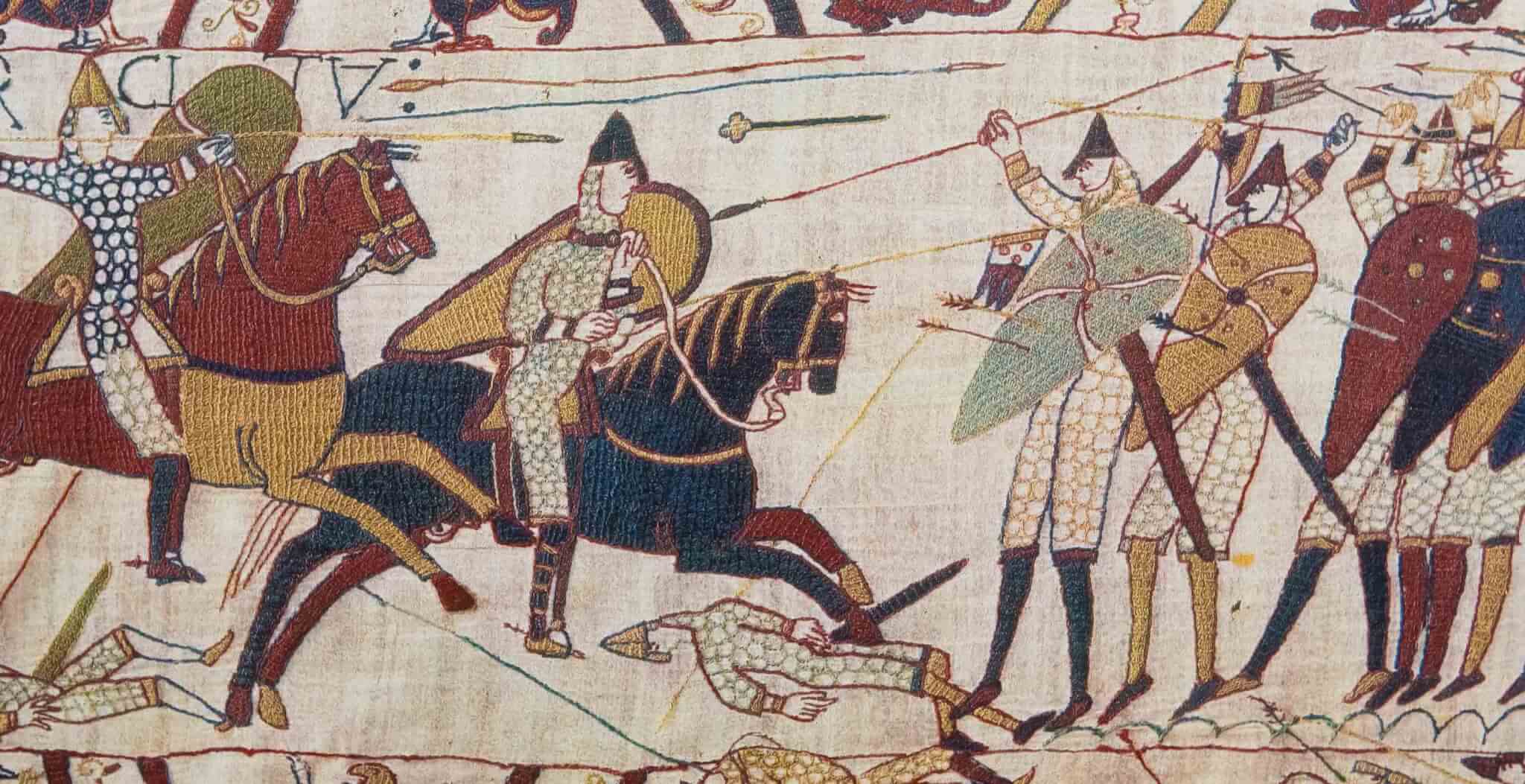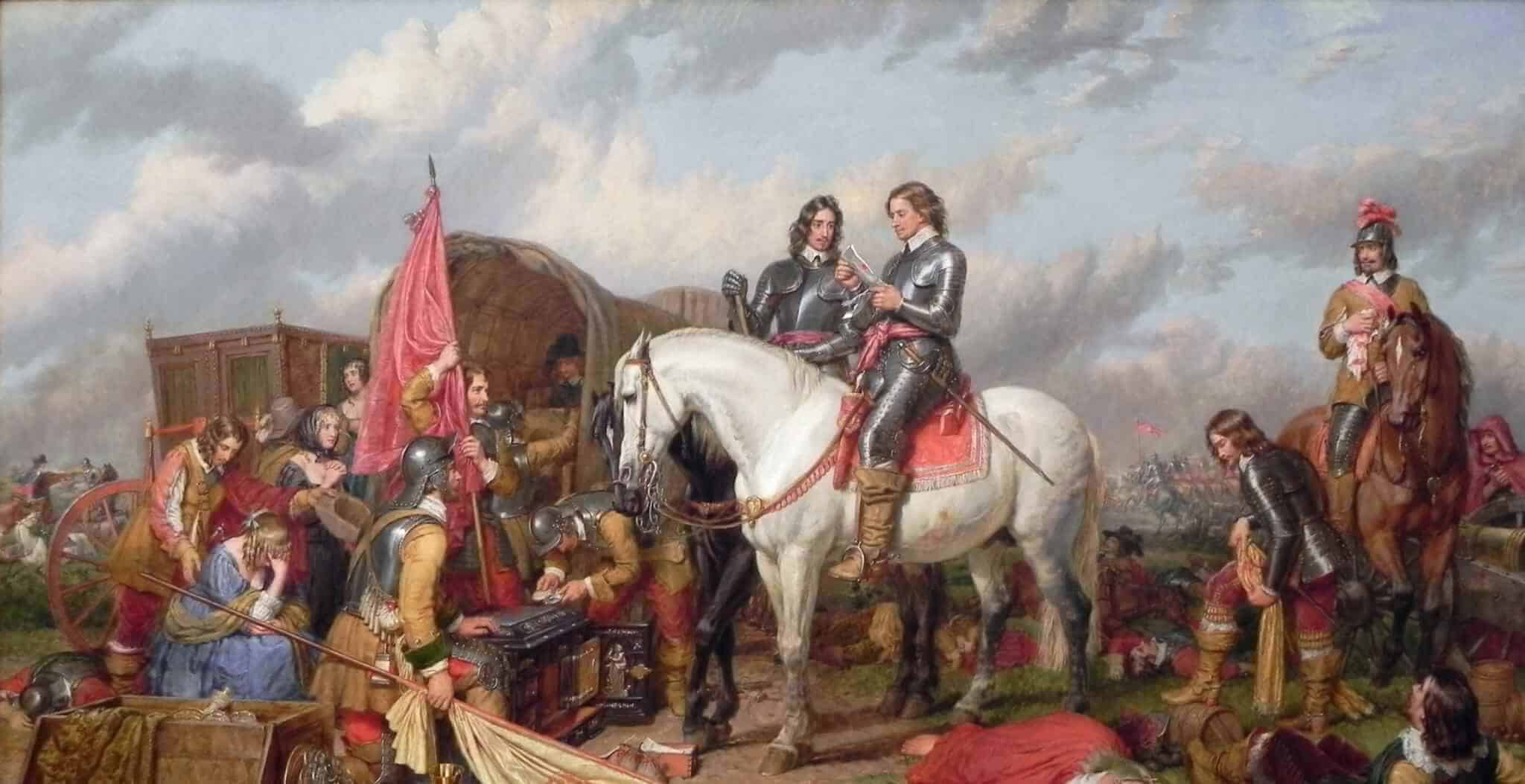The Battle of Hastings was fought for the crown of England between William, Duke of Normandy and the recently enthroned Harold Godwinson (Harold II).
The English army, led by King Harold, took up their position on Senlac Hill near Hastings on the morning of the 14th October 1066. Harold’s exhausted and depleted Saxon troops had been forced to march southwards following the bitter, bloody battle to capture Stamford Bridge in Yorkshire only days earlier.
William attacked with cavalry as well as infantry; in the classic English manner, Harold’s well trained troops all fought on foot behind their mighty shield wall.
The fighting continued for most of the day with the shield wall unbroken. It is said that it was the sight of retreating Normans which finally lured the English away from their defensive positions as they broke ranks in pursuit of the enemy.
Once their carefully organised formation was broken, the English were vulnerable to cavalry attack. King Harold was struck in the eye by a chance Norman arrow and was killed, but the battle raged on until all of Harold’s loyal bodyguard were slain.
This battle changed the entire course of not just English, but European history. England would henceforth be ruled by an oppressive foreign aristocracy, which in turn would influence the entire ecclesiastical and political institutions of Christendom.
Click here for a Battlefield Map

Key Facts:
 Date: 14th October, 1066
Date: 14th October, 1066
War: Norman Conquest
Location: Battle, East Sussex
Belligerents: English Anglo-Saxons, Normans
Victors: Normans
Numbers: English Anglo-Saxons around 8,000, Normans between 5,000 – 12,000
Casualties: Unknown
Commanders: Harold Godwinson (England – pictured to the right), Duke William of Normandy (Normans)
Location:
Four years after the Battle of Hastings, Pope Alexander II ordered William the Conquerer to make penance for his invasion. As a consequence, William commissioned an abbey to be built on the site of the battle, and the remains of Battle Abbey (as it would later be known) stands proudly to this day. The site is now operated by English Heritage, and also includes a gatehouse exhibition as well as wooden sculptures of Norman and Saxon troops scattered across the landscape.







